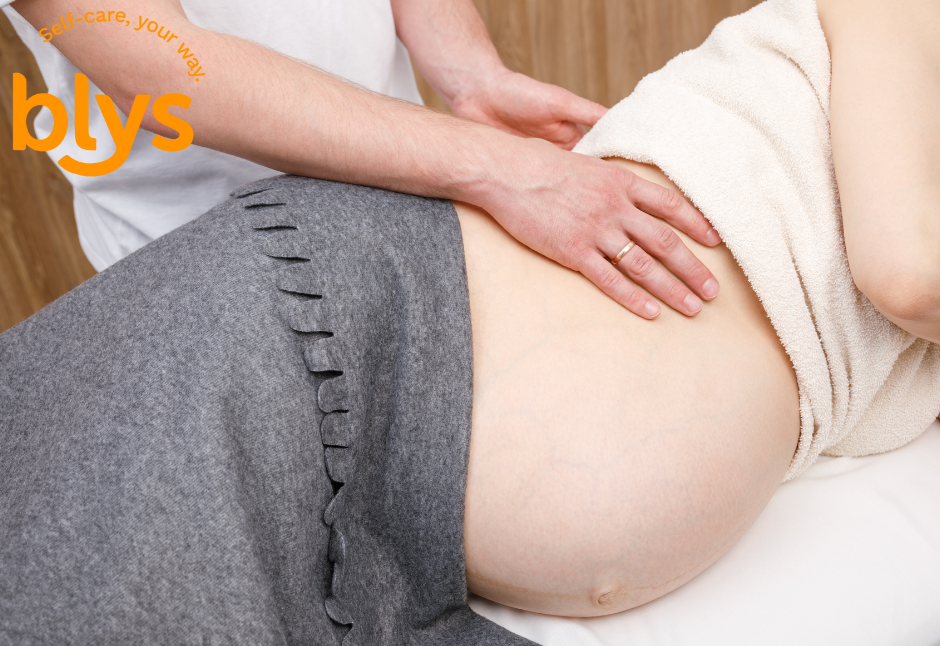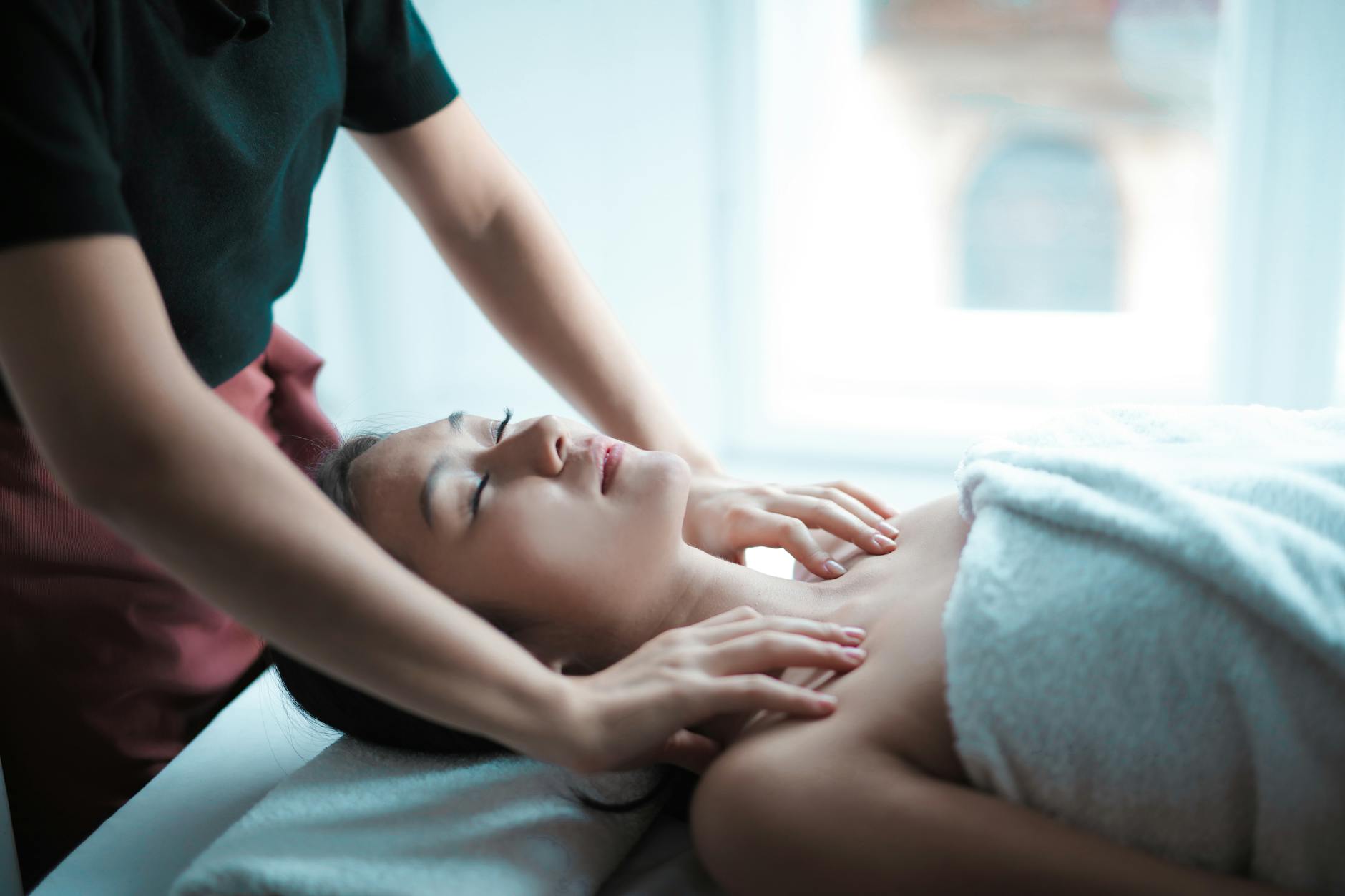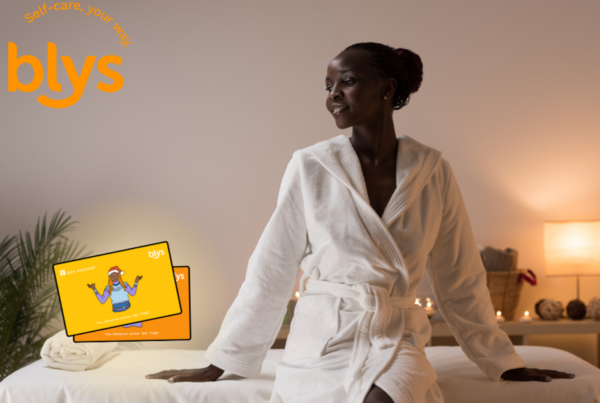
Pregnancy is a wonderful experience, but it often comes with back pain, poor sleep, swelling, and added stress. As your body changes, muscles and joints work harder, making comfort and rest even more important.
A prenatal massage from a certified therapist offers safe, gentle relief for these challenges. It eases muscle tension, supports better sleep, and helps you feel calm and balanced throughout your pregnancy.
With Blys, you can enjoy professional prenatal care right at home. Qualified therapists come to you so there’s no travel, no stress, just relaxation and comfort in your own space.
Proven Benefits of Prenatal Massage
A professional prenatal massage provides more than relaxation; it delivers real physical and emotional relief. The Mayo Clinic notes that prenatal massage helps reduce swelling (edema) by improving circulation and lymph flow, easing the heaviness in legs and ankles.
It also relieves lower back, hip, and sciatic pain, which often result from postural changes. Research shows that massage during pregnancy helps release muscle tension and reduce nerve discomfort, allowing better movement and rest.
On the emotional side, prenatal massage helps lower stress hormones while increasing serotonin and dopamine, key mood regulators that improve relaxation and sleep. The boost in circulation also enhances oxygen and nutrient delivery to both mother and baby, supporting overall well-being.
Safety First: Understanding Prenatal Massage Safety
A prenatal massage is safe and beneficial when performed by a trained professional who understands how the body changes during pregnancy. These therapists know how to adapt techniques to support circulation, avoid sensitive areas, and maintain comfort for both mother and baby.
A certified therapist must:
- Understand pregnancy anatomy and hormonal changes
- Know contraindications such as high-risk pregnancies or recent bleeding
- Adjust positioning and pressure safely across each trimester
- Use proper support cushions to reduce strain on joints and muscles
At Blys, you can trust that every prenatal massage therapist is qualified, vetted, and fully insured. Each session is designed around your needs gentle, secure, and focused on easing tension without risk.
With the right professional care, prenatal massage becomes a safe and soothing part of your prenatal routine, helping you feel relaxed and supported every step of the way.
Our guide on prenatal massage and mental health recovery states that by reducing stress and encouraging relaxation, gentle massage enhances postpartum well-being.
When to Start and How Often
Many experts recommend beginning prenatal massage after the first trimester, around week 12, once your body has adapted to early changes like fatigue and nausea.
The second trimester is often the most comfortable and effective time to receive regular sessions. As your posture shifts and your body carries more weight, massage can ease tension in the back, hips, and legs while improving sleep and relaxation.
By the third trimester, massage remains safe with proper care and positioning. Certified therapists use side-lying or semi-reclined setups with cushions to support your body and avoid pressure on sensitive areas. These sessions help reduce swelling, improve circulation, and relieve pre-birth discomfort.
In general, sessions can be scheduled weekly, fortnightly, or monthly depending on your comfort and needs. With Blys, you can enjoy consistent, safe prenatal care designed to support you at every stage right from the comfort of home.
Trimester-by-Trimester Guide
Your body changes rapidly throughout pregnancy, and each trimester calls for a slightly different approach to massage. Certified therapists adjust every session to suit your stage and comfort.
- First trimester: Focus stays light and gentle. Therapists avoid deep pressure and abdominal areas, using soothing strokes to ease tension and support circulation.
- Second trimester: The most comfortable stage for regular sessions. Massage helps relieve back and hip pain, improve sleep, and maintain flexibility as posture shifts.
- Third trimester: Positioning is key. Side-lying or semi-reclined setups with cushions reduce pressure, while gentle work targets swelling, leg fatigue, and sciatic pain.
With Blys, every massage is tailored to your trimester, ensuring safe, effective relief and total comfort at home.
The Right Therapist: What Certification Means
A certified prenatal massage therapist does more than provide comfort they ensure safety through specialized knowledge and experience. Prenatal massage requires training that goes beyond general techniques, focusing on how the body changes during pregnancy and how to adapt care accordingly.
Qualified therapists are trained to:
- Understand pregnancy anatomy, including muscle, joint, and circulation changes
- Identify risk factors such as preeclampsia, severe swelling, or recent bleeding
- Modify pressure and positioning for safety in each trimester
- Communicate clearly and adjust techniques based on comfort and feedback
With Blys, you can relax knowing every therapist is certified, insured, and fully vetted. Each one meets professional standards and follows safe, pregnancy-specific practices designed to protect you and your baby.
As shared in our article on at-home prenatal massage benefits, home sessions enhance comfort and relaxation by removing travel stress.
Techniques and Positioning for Comfort
During a prenatal massage, comfort and safety guide every step. Therapists use supportive positions to protect your body and ensure deep relaxation.
Most sessions take place in a side-lying position, with cushions between the knees, under the belly, and behind the back for full support. In later months, a semi-reclined setup may be used to ease breathing and reduce pressure on the abdomen.
Focus areas often include the hips, lower back, and legs, where tension and swelling are common. Gentle, flowing strokes improve circulation, reduce fluid buildup, and ease muscle tightness.
Lying flat after the first trimester is avoided, as it can restrict blood flow through the vena cava. Certified therapists know how to position you safely and check in often to ensure comfort.
With Blys, every massage is customized to your needs, using carefully selected techniques and effective communication to help you relax and feel supported at home.
Areas of Focus and Pressure Points to Avoid
A professional prenatal massage targets key areas of tension while avoiding sensitive points that could cause discomfort or risk. Therapists work with care to ease muscle strain, improve circulation, and promote deep relaxation.
Common focus areas include:
- Lower back and hips: relieve postural strain and pressure from added weight.
- Neck and shoulders: reduce stiffness from daily tension.
- Legs and feet: ease swelling and improve lymphatic flow.
- Arms and hands: relieve fatigue and promote circulation.
- Scalp and face: calm the nervous system and reduce stress.
Certain areas require extra caution. Trained therapists avoid deep abdominal pressure and sensitive inner ankle and wrist points, which are linked to uterine stimulation in acupressure.
With Blys, every therapist is certified to adjust pressure safely, ensuring your comfort at all times. Each movement is gentle, mindful, and designed to help you unwind confidently in your space.
Contraindications and When to Seek Doctor Approval
While prenatal massage is generally safe, some health conditions require extra caution and medical approval before scheduling a session. These include high-risk pregnancies, preeclampsia or high blood pressure, severe swelling, sudden fluid retention, recent bleeding, deep vein thrombosis, or recent surgery. In such cases, it’s best to consult your GP, midwife, or obstetrician first to confirm when it’s safe to receive a massage.
Open communication with your healthcare provider is essential. They can help determine if massage is appropriate for your current condition and recommend any necessary adjustments to ensure your comfort and safety.
At Blys, therapist safety standards are strict. Each certified professional is trained to recognize potential contraindications, modify techniques where necessary, and postpone treatment if there are any risks. They also encourage clients to share updates from their doctor to align care plans properly.
With this collaborative approach, prenatal massage can remain a safe, nurturing, and beneficial part of your prenatal well-being, helping you feel relaxed and supported throughout your journey.
Beyond Pregnancy: Postpartum and At-Home Care
The benefits of massage don’t end after birth. A postnatal massage helps new mums recover physically and emotionally by easing muscle soreness, improving circulation, and supporting hormone balance.
It can relieve tension from labor, breastfeeding, and newborn care while helping reduce swelling and fatigue. Many women also find that postnatal massage encourages relaxation, improves sleep, and supports emotional recovery during the transition to motherhood.
At-home sessions make this care even more convenient. With Blys, there’s no need to travel or arrange childcare; your therapist comes to you. You can use your pillows, feed or rest when needed, and even have your partner nearby for support. Once the massage ends, you can rest immediately, extending the sense of calm and recovery without any disruption.
Whether you’re seeking to ease tension, improve circulation, or simply take a moment for yourself, postpartum massage provides gentle, restorative care for your body and mind.
Recover and relax your way. Book a certified prenatal or postpartum massage at home with Blys today.





